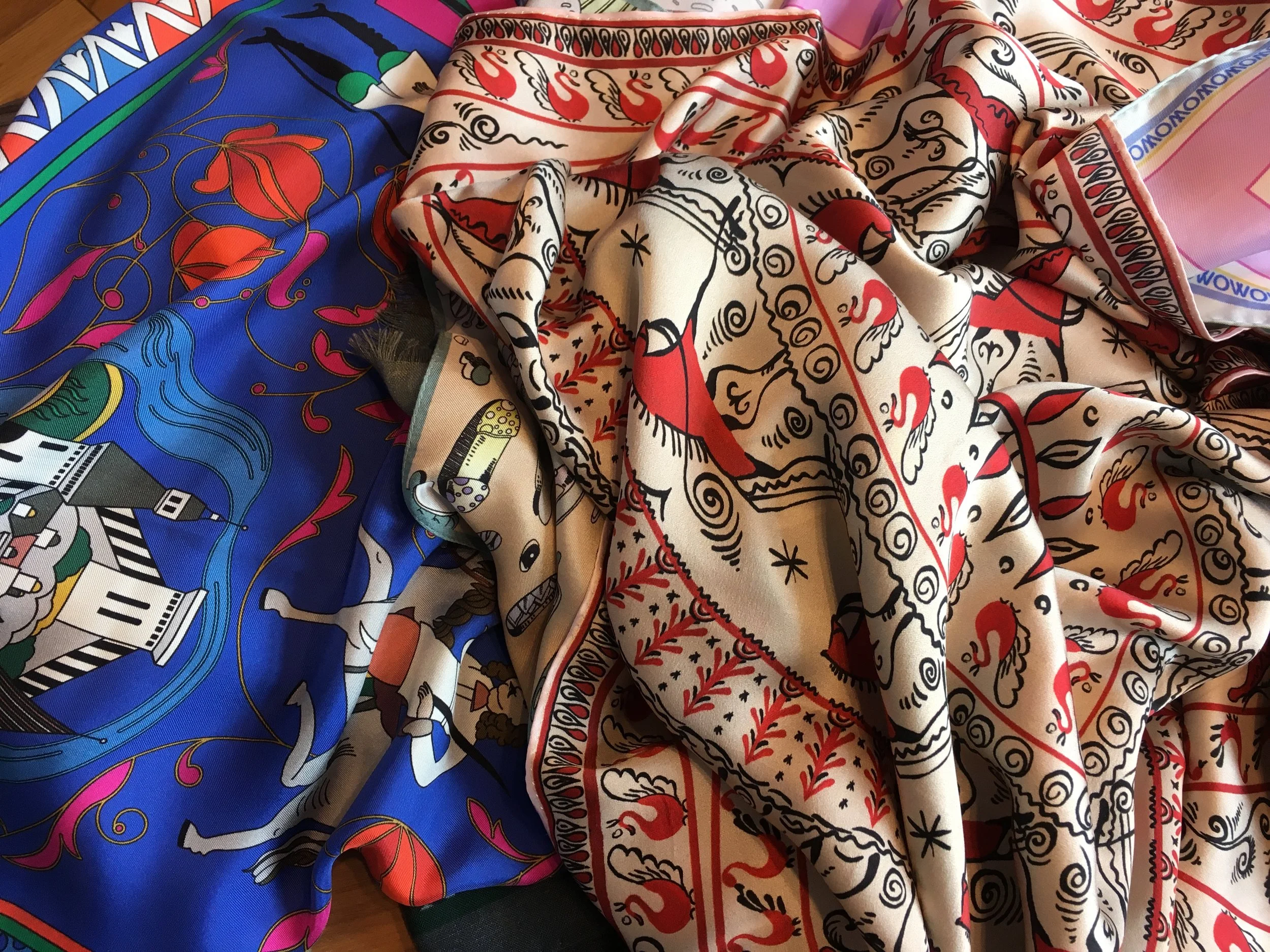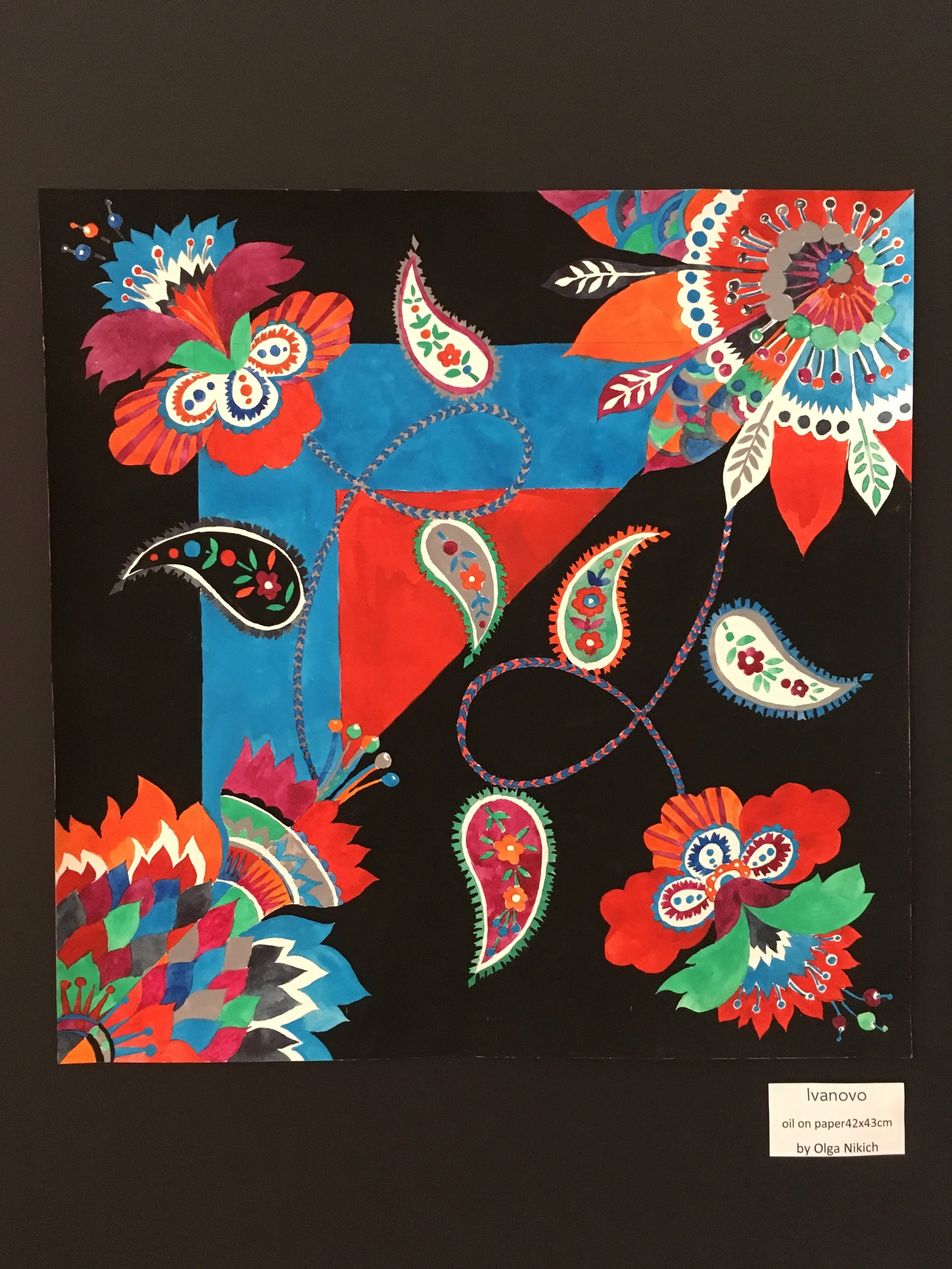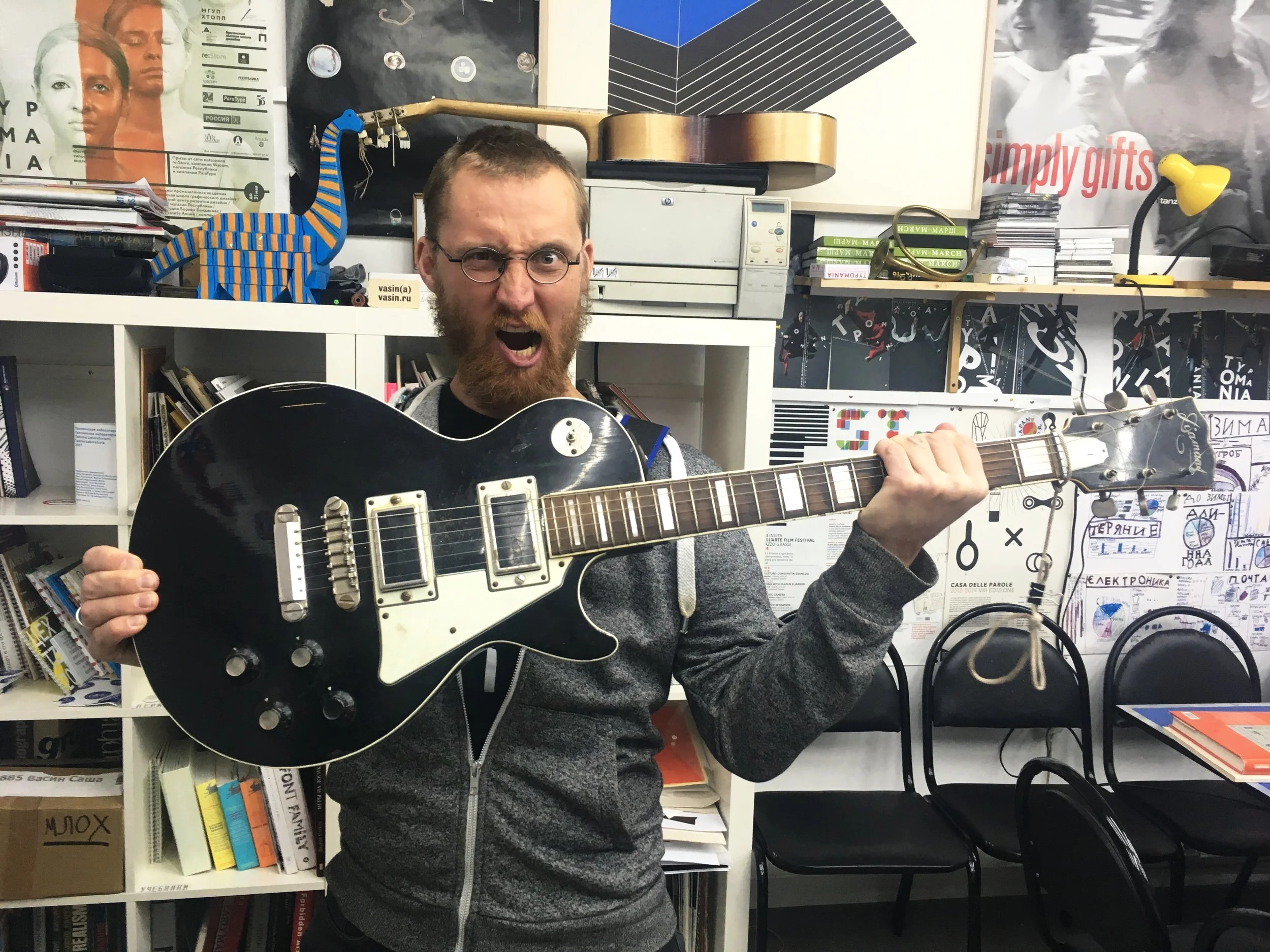Being textile designer
We wear them everyday: patterns from our tops and designs from our scarves. But we never actually think about who made them. Someone, somewhere - often in China, I’m afraid - took good care of every detail. Each color was a choice, as well as the fabric, the quality of the fibers and the finishes. This is actually a job !
So when I met Stéphanie from Carré Russe and learnt she was directly working with designers on small editions of the archetypal Russian accessory that is scarves, I thought it was a great opportunity to bring some life and understanding to this daily object that bears the responsibility of adding some color and character to our outfits.
Here is what I learned from my encounters with two Russian scarf designers : Olga Nikitch from Silk Life and Ksenia Kossaya from Kokosha Studio.
Being a designer is first being creative
There is no such thing as a High School of Designing the Best Scarf in Russia (or anywhere else, I presume). So you can take art lessons as a kid, study in a decorative arts institute, be a self-educated graphic designer, work as a stylist… and it can all lead to be a scarf designer. What matters is that you like :
- to draw,
- to make pictures (photo, collage or whatever),
- fabrics
- colors
- to work by hand
- to master the whole process
- all of the above
and are good at it.
Being a textile designer is not being an artist (or at least not all the time)
There are a few differences between an artist and a designer. A designer works with instructions and constraints (the square shape and the softness of the textile, for example) while an artist is free to pick whatever medium they’d like. A designer works for customers with precise expectations, while uselessness is key in art (or supposedly so). Still, what is special about scarf design is that it is a luxury good, complete with all the care for details and quality of the materials. Independent scarf designers work on limited editions and make all their products unique. For that, they need time. One to four months on one composition is not unusual.
Your scarf was not built in a day
Once you read that, you will not treat your silk scarf the same way as before. Here are the common steps of the conception of a scarf :
- have an idea. Nurture it in your head until it is ready.
- draw outlines and sketches, research about the elements you want to work with (this flower or that pattern).
- draw neatly the full scarf scale 1, either in quarter or all of it, on paper or on tracing paper. If it is done first on paper, then it has to be traced later.
- scan it
- redraw everything on the computer, with a tablet or a contouring device.
- color it.
- make several versions
- ask advice
- make choices
- send it to the manufacturer for samples
- make choices
- confirm order
- tada !
Choose your cause
Between Zara and Hermes, there is a wide range of possibilities. Prices, fabrics, and visual identity are up to you. What independent scarf designers have that others don’t is a soul. They believe in what they make every step of the way. They dedicate their time, energy, creativity and personal history to it. As Russians, Olga and Ksenia chose their cause from their own identities and, each in their own way, contribute to modernizing Russian tradition and culture. This commitment is rooted in their childhood, studies and cultural references, as well as in their will to do their part for the future.
This is their way of making Russia a creative country that does not rest on its laurel patterns but make them live and adapt to the XXIth century. When they decide to work only with Russian manufacturers or to use a fabric made of orange peel (for zero-impact on the environment), they also commit to a better world.
At some point you need to be a business woman
We saw above how a scarf is produced. But your job is not done yet. When you are an independent scarf designer, you will have to sell your products as well. Some are lucky enough to have a business partner, but even so, everybody does a bit of everything in small businesses. So negotiating skills are a must, with manufacturers (stock, unit prices and so on) as well as with resellers from all over the world. Today, the Internet is a great opportunity to avoid intermediaries, but you will need to be your own webmaster. You will need to be strategic as well: in which event should you invest ? To which country should you travel ?
Be prepared to fight and explain, again and again, what you do
Being a scarf designer can feel a bit lonely. All these listed tasks will of course need to be done at the same time. Multi-tasker will be your middle name. Be unremitting, as you will have to explain, again and again, what you are and what you do. Educate your customers about the roulé technique and the various qualities of silk, and you will strengthen your niche. Your knowledge and your work process add value to your product but you are struggling against the trend of mass consumption.
Paradoxically enough, while the artist figure is very strong in Russia, design has not won its title of nobility yet. Moreover, after years of Soviet brainwashing focused on productive industries and cookie-cutter outfits and interiors, creativity and style are still not key values in the country. Hence there is no proper recognition for creative works, neither from the average consumer nor from wholesalers or manufacturers.
Things are changing, and the young generation embrace the manual trades in Moscow as in all the major hipster cities of the world. But between craft and luxury goods lies a whole sea of ambition. For hand-made luxury products such as scarves to really flourish in a thriving business, money and investments are needed. And if customers from all over the world are seduced by new and unique compositions, investors are still too few to take risk in such a Russian and niche field.
If you loved this article, please wait for the following : interviews of Ksenia Kossaya and Olga Nikich.







